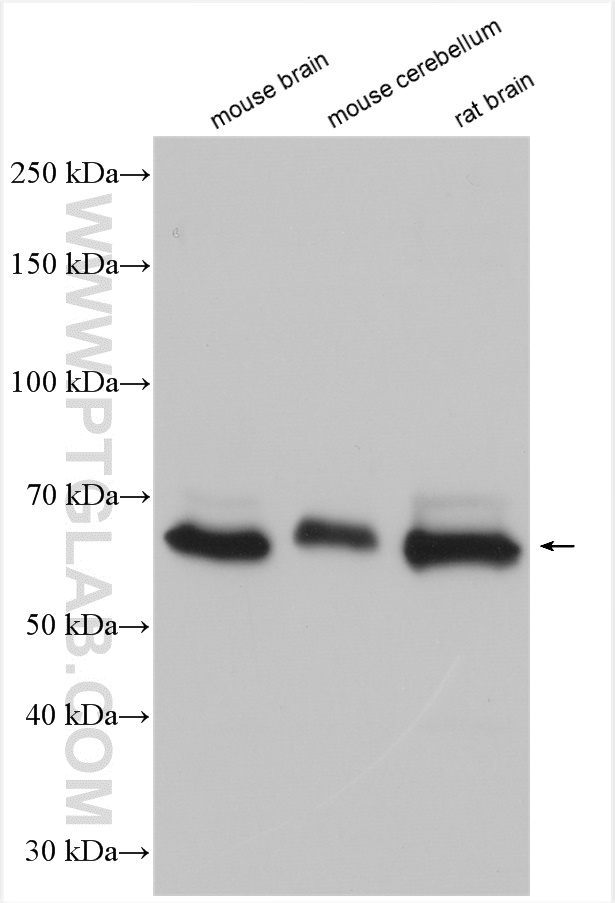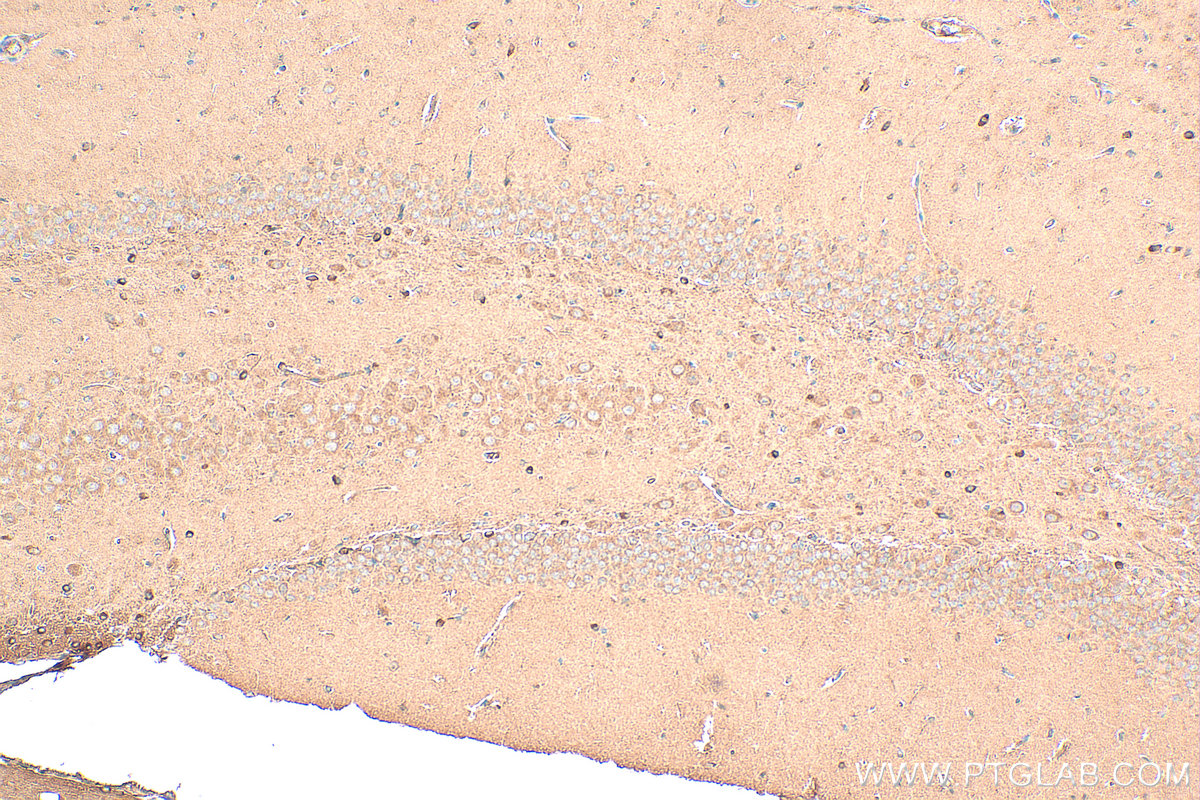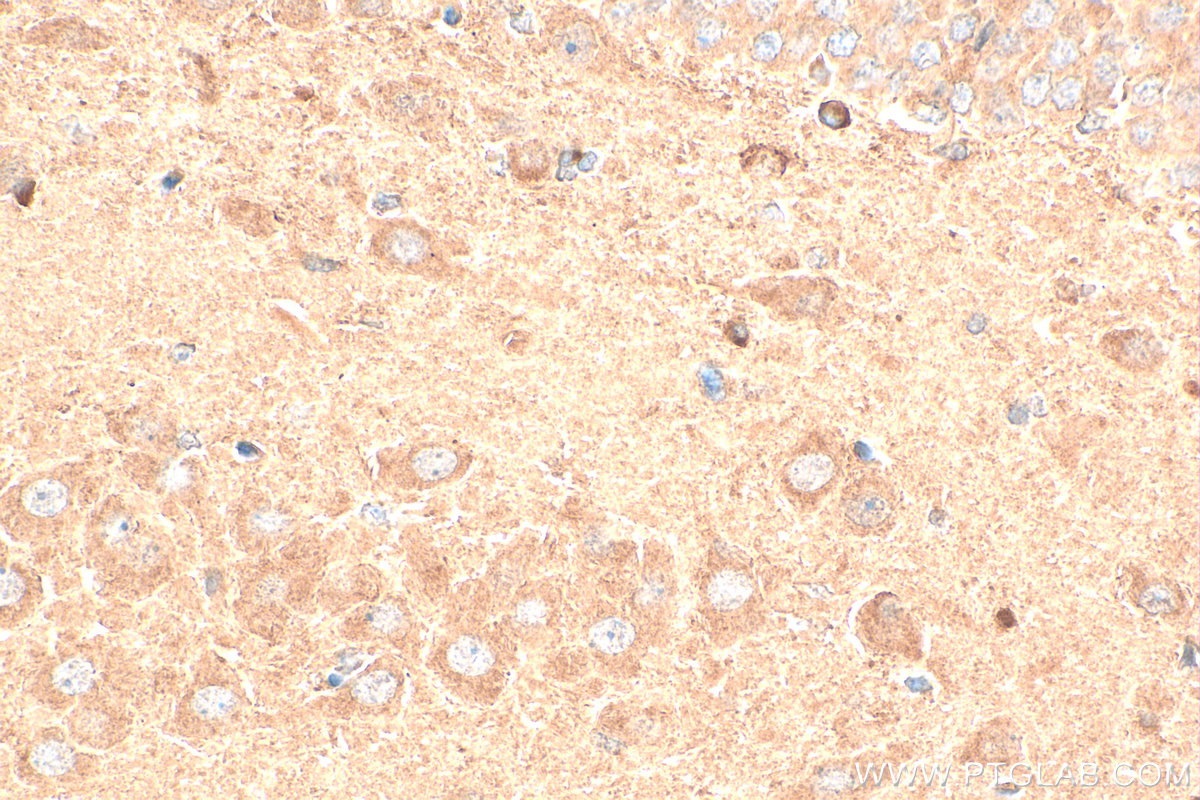验证数据展示
经过测试的应用
| Positive WB detected in | mouse brain tissue, mouse cerebellum tissue, rat brain tissue |
| Positive IHC detected in | rat brain tissue Note: suggested antigen retrieval with TE buffer pH 9.0; (*) Alternatively, antigen retrieval may be performed with citrate buffer pH 6.0 |
推荐稀释比
| 应用 | 推荐稀释比 |
|---|---|
| Western Blot (WB) | WB : 1:1000-1:8000 |
| Immunohistochemistry (IHC) | IHC : 1:50-1:500 |
| It is recommended that this reagent should be titrated in each testing system to obtain optimal results. | |
| Sample-dependent, Check data in validation data gallery. | |
发表文章中的应用
| KD/KO | See 1 publications below |
| WB | See 1 publications below |
产品信息
29989-1-AP targets GPR37/Pael-R in WB, IHC, ELISA applications and shows reactivity with human, mouse, rat samples.
| 经测试应用 | WB, IHC, ELISA Application Description |
| 文献引用应用 | WB |
| 经测试反应性 | human, mouse, rat |
| 文献引用反应性 | mouse |
| 免疫原 |
CatNo: Ag32431 Product name: Recombinant human GPR37 protein Source: e coli.-derived, PGEX-4T Tag: GST Domain: 34-180 aa of BC040007 Sequence: SRNETCLGESCAPTVIQRRGRDAWGPGNSARDVLRARAPREEQGAAFLAGPSWDLPAAPGRDPAAGRGAEASAAGPPGPPTRPPGPWRWKGARGQEPSETLGRGNPTALQLFLQISEEEEKGPRGAGISGRSQEQSVKTVPGASDLF 种属同源性预测 |
| 宿主/亚型 | Rabbit / IgG |
| 抗体类别 | Polyclonal |
| 产品类型 | Antibody |
| 全称 | G protein-coupled receptor 37 (endothelin receptor type B-like) |
| 别名 | GPR37, Pael-R, EDNRBL, Endothelin B receptor-like protein 1, ETBR LP 1 |
| 计算分子量 | 67 kDa |
| 观测分子量 | 67 kDa |
| GenBank蛋白编号 | BC040007 |
| 基因名称 | GPR37 |
| Gene ID (NCBI) | 2861 |
| RRID | AB_2935493 |
| 偶联类型 | Unconjugated |
| 形式 | Liquid |
| 纯化方式 | Antigen affinity purification |
| UNIPROT ID | O15354 |
| 储存缓冲液 | PBS with 0.02% sodium azide and 50% glycerol, pH 7.3. |
| 储存条件 | Store at -20°C. Stable for one year after shipment. Aliquoting is unnecessary for -20oC storage. |
背景介绍
The orphan G protein-coupled receptor GPR37, also known as PAELR (parkin-associated endothelin receptor-like receptor) or ETBR-LP-1 (endothelin B receptor-like protein 1), is a 613 aa, multi-pass membrane protein predominantly expressed in the brain. It is a substrate of parkin (PARK2). When overexpressed in cells, GPR37 tends to become insoluble, unfolded, and ubiquitinated in vivo. Accumulation of the unfolded protein may lead to dopaminergic neuronal death in juvenile Parkinson disease (JPD).
实验方案
| Product Specific Protocols | |
|---|---|
| WB protocol for GPR37/Pael-R antibody 29989-1-AP | Download protocol |
| Standard Protocols | |
|---|---|
| Click here to view our Standard Protocols |




